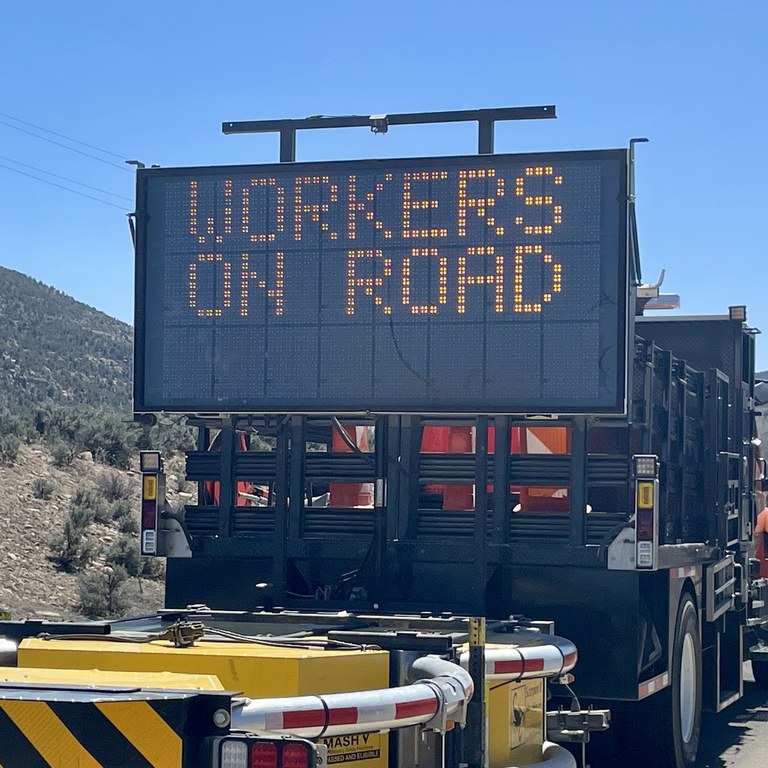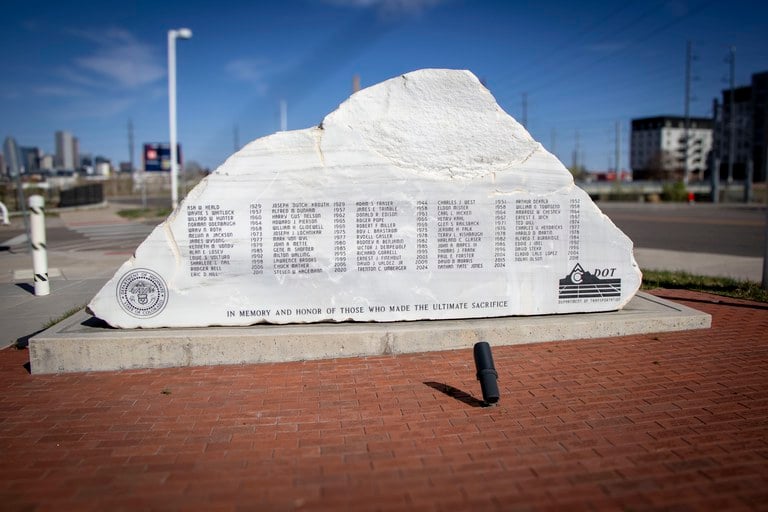Work Zone Awareness Week
About Work Zone Awareness Week
Every spring, the Federal Highway Administration (FHWA) and its partners sponsor National Work Zone Awareness Week, to bring attention to motorist and worker safety and mobility issues in and around work zones.
In 2024, there were 23 crashes, resulting in 31 fatalities in Colorado construction and maintenance work zones.
“Private contractors work side by side on the highways with our partners at CDOT to help maintain and improve Colorado’s roads. These individuals get up each day and go to work to provide for their families and improve the quality of life for all Coloradans,” said CCA President and CEO Tony Milo. “By slowing down and paying attention in work zones, motorists can help ensure that these hard-working Coloradans get to go home to their loved ones at the end of their shift.”
Nationally, work zone crashes decreased by 10% and fatalities from those crashes decreased 8% from 2021 to 2022 (most recent data available). Rear-end crashes, crashes with commercial vehicles and those involving drivers going over the speed limit both increased slightly from 2021 to 2022.
While highway workers are at great risk every day, it is just as critical for motorists to be safe and responsible in work zones. In fact, four out of five work zone fatalities are people driving through work zones, not highway workers.
“Our Maintenance crews work every day to keep Colorado safely moving. It is dangerous but vital work. On Remembrance Day we honor those who didn't make it home so others could," said CDOT Director of Maintenance and Operations Shawn Smith. "We continue to improve procedures to try to keep everyone safe, but we also need the travelling public to slow down and pay attention in work zones as that final piece of the safety puzzle.”
CDOT averages between 175 and 200 projects on its roadways each year, not including maintenance projects. When driving through a work zone, fines for most infractions are doubled.

CDOT Remembrance Day
The Colorado Department of Transportation holds its annual observance of Remembrance Day each year to honor the 64 employees who have died in the line of duty since 1929, including the names of Trenton C. Umberger and Nathan “Nate” Jones who died on the job last year.
“As we unveil the etchings on CDOT’s memorial stone, wishing that we did not have to add any more names, let alone two, we must redouble our commitment to remembering our two coworkers and working together to do everything we can to make the roads safer for the hard working highway maintainers who, each day, take risks to keep the roads safe for the traveling public,” said CDOT Executive Director Shoshana Lew.
Remembrance Day not only honors our fallen colleagues, it also serves as an important reminder to those traveling the state’s roadways to make safety their first priority,” added Director Lew. “With the road construction season upon us, it’s imperative that those who are constructing and maintaining our highways remain safe while they work. Please remember that a person’s life is priceless, a traffic slowdown is a minor inconvenience.”
CDOT Remembrance Day and National Work Zone Awareness Week is even more meaningful to our CDOT family this year. On Sept. 4, 2024, CDOT workers Trenton C. Umberger and Nathan “Nate” Jones, members of CDOT Patrol 1 based in Grand Junction, were killed when they were hit by a car while working outside of their vehicle which was parked outside of the fogline. Their CDOT vehicle was also hit by the car and one of the occupants of the other car was also later declared deceased.

CDOT Workers Lost In the Line of Duty:
Joseph “Dutch” Krouth, 1929, Arthur Dekalb, 1952, Wayne S. Whitlock, 1957, Alfred M. Dunham, 1957, James E. Trimble, 1958, Eldon Misner, 1958, William O. Townsend, 1958, Willard W. Hunter, 1960, Harry “Gus” Nelson, 1962, Donald R. Edison, 1963, Carl L. Hicken, 1964, Roger Pope, 1966, Henry Kahl, 1967, Ernest E. Wich, 1967, Wray N. Roth, 1968, Robert F. Miller, 1969, Melvin A. Jackson, 1973, Ted Wills, 1974, Jerome H. Falk, 1976, Charles V. Hendricks, 1977, Mark Van Wyl, 1977, Rydell Gasler, 1978, Terry L. Kishbaugh, 1978, Harold D. Martin, 1978, Rodney A. Benjamin, 1982, Harland C. Glaser, 1982, Alan E. Losey, 1985, Victor J. Dempewolf, 1985, Milton Walling, 1995,, Richard Gorrell, 1995, Thomas J. Frank, 1996, Rodger Bell, 2006,, Chuck Mather, 2006, David J. Valdez, Jr., 2009, Eric D. Hill, 2019, Steven Hagemann, 2020, Trent Umberger, 2024, Nathan "Nate" Jones, 2024.
“We will continue to honor the memory of our departed colleagues each and every year, no matter the circumstances,” said CDOT Executive Director Shoshana Lew.
Know the Facts
Work zones are a necessary part of the life cycle of our streets, roads, and highways. They provide a safe area for workers and a safe route for road users around needed road work activity (construction, maintenance, utility). Crashes in and around work zones impact everyone.
In Colorado, eight people were killed following a crash in a work zone. Six were driving through a construction zone and two were part of the work crew. According to the Federal Highway Administration, in 2018, the last year statistics are available, there were 671 work zone crashes, resulting in 754 fatalities, the majority of which were motorists. Roadway workers accounted for 124 of those fatalities.
Relative to 2017, 2018 saw several favorable trends in a decreased number of work zone fatalities and fatal work zone crashes around the United States, based on data from the National Highway Traffic Administration (for the most recent years available). Total work zone fatalities and fatal work zone crashes decreased by nearly 7%, and the number of fatal work zone crashes involving large trucks or buses decreased by 6%. In 2018, there were decreases in both fatal work zone crashes where speeding was involved and worker fatalities on road construction sites. However, the number of worker fatalities due to vehicles running over or backing over a worker was unchanged from 2017 to 2018.
For more information visit www.nwzaw.org. Follow the CDOT Facebook page for daily updates this week recognizing the safety efforts by Team CDOT.
Remember: Slow for the Cone Zone
The following tips are to help you stay safe while traveling through maintenance and construction work zones.
- Do not speed in work zones. Obey the posted speed limits.
- Stay Alert! Expect the unexpected.
- Watch for workers. Drive with caution.
- Don't change lanes unnecessarily.
- Avoid using mobile devices such as phones while driving in work zones.
- Turn on headlights so that workers and other drivers can see you.
- Be especially alert at night while driving in work zones.
- Expect delays, especially during peak travel times.
- Allow ample space between you and the car in front of you.
- Anticipate lane shifts and merge when directed to do so.
- Be patient!
